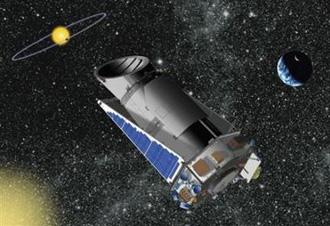World
NASA´s Kepler mission to seek Earth-like planets
Source: Xinhua | 02-20-2009 08:02
Special Report: Tech MaxWASHINGTON, Feb. 19 (Xinhua) -- NASA's Kepler spacecraft is ready to be moved to the launch pad and will soon begin a journey to search for worlds that could potentially host life, the U.S. National Aeronautics and Space Administration (NASA) said on Thursday in a statement.
 |
| NASA's Kepler telescope in an undated illustration. (NASA/Handout/Reuters) |
Kepler is scheduled to blast into space from Cape Canaveral Air Force Station, Florida, aboard a Delta II rocket on March 5 at 10:48 p.m. EST (0348 GMT). It is the first mission with the ability to find planets like Earth -- rocky planets that orbit sun-like stars in a warm zone where liquid water could be maintained on the surface. Liquid water is believed to be essential for the formation of life.
"Kepler is a critical component in NASA's broader efforts to ultimately find and study planets where Earth-like conditions may be present," said Jon Morse, the Astrophysics Division director at NASA Headquarters in Washington.
"The planetary census Kepler takes will be very important for understanding the frequency of Earth-size planets in our galaxy and planning future missions that directly detect and characterize such worlds around nearby stars," Morse added.
The Kepler spacecraft will watch a patch of space for 3.5 years or more for signs of Earth-sized planets moving around stars similar to the Sun. The patch that Kepler will watch contains about 100,000 stars like the Sun.
Using special detectors similar to those used in digital cameras, Kepler will look for slight dimming in the stars as planets pass between the star and Kepler. The Kepler's place in space will allow it to watch the same stars constantly throughout its mission, something observatories like Hubble Space Telescope cannot do.
Editor:Zhang Pengfei



